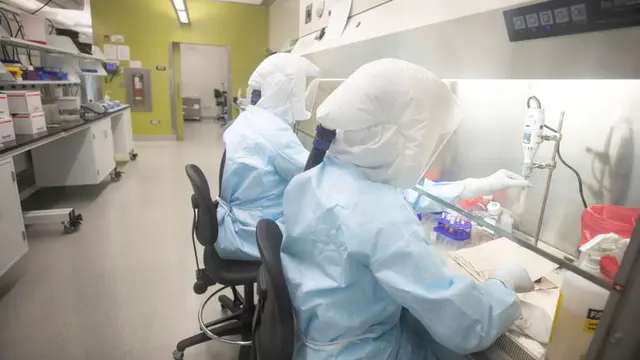Scientists around the world are grappling with how to halt the new coronavirus which has been declared a global public health emergency.
Professor Paul Kellam is a virologist who is part of a team at Imperial College in London working on a vaccine for the new coronavirus, which has infected thousands and killed at least 213. The team is one of several around the world trying to find a vaccine.
Prof Kellam and British colleagues developed the first genetic analysis of the Middle East respiratory virus (MERS) - also a coronavirus - with Saudi Arabia's department of health, which led to camels being pinpointed as the source.
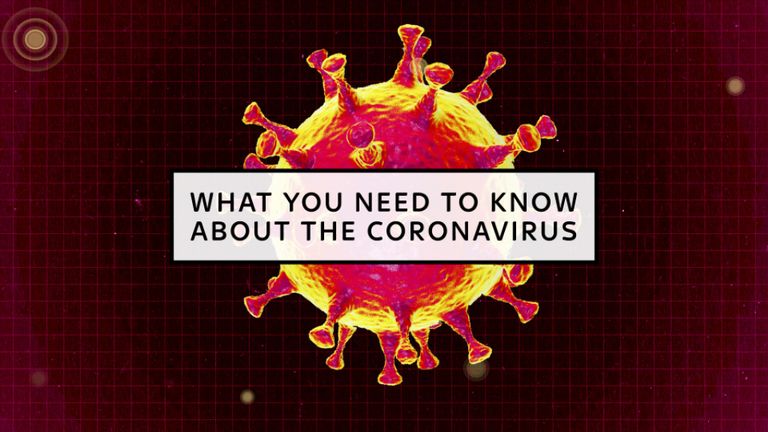
Coronavirus: What you need to know
The professor of virus genomics spoke to Sky News about the science behind the new illness and how their knowledge of two previous coronavirus epidemics is helping them find a vaccine.
Close relation to SARS
The new coronavirus, which originated in Wuhan, China, is closely linked to MERs and severe acute respiratory syndrome (SARS), Prof Kellam said.
"It's a close relative to SARS and MERS but not genetically identical," he told Sky News.
"It is a new virus, it's genetically distinct but sufficiently related to viruses and infections so we're prepared as we can be scientifically and clinically to bring it under control.
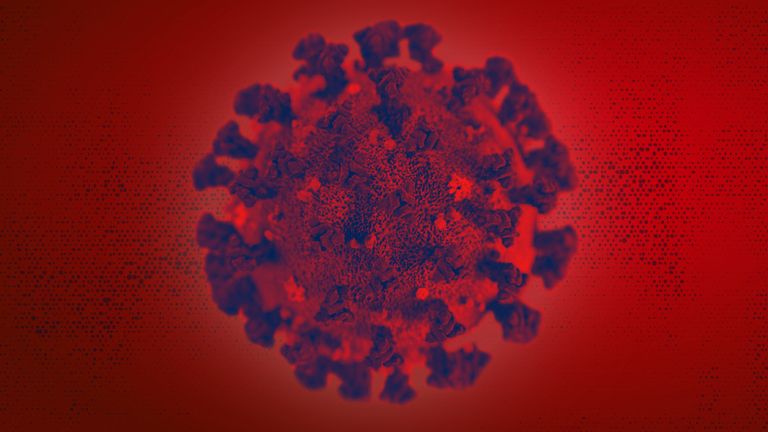
Image:The ultrastructural morphology exhibited by the new coronavirus
"We can learn things about the virus by looking at its genome. It looks like a standard coronavirus in terms of gene content.
"We know the virus can infect cells through the ACE2 receptor (a converter enzyme) on the cell surface, the same as SARS, so that means you can test for it if you can get through to a human ACE2 receptor point.
"So, we can look at that to assess treatments and determine whether that needs to be anti-viral or a vaccine."
Although the new coronavirus is closely related to SARS, Prof Kellam said by analysing its genome there is "always a chance we will learn different things".
How fast can a vaccine be produced?
Vaccines usually take years to develop, but as this new type of coronavirus is spreading rapidly around the world, scientists are having to work around the clock to find one.
After the SARS outbreak in 2003 it took researchers about 20 months to get a vaccine ready for human trials. Luckily, it was never needed as the disease was eventually contained.
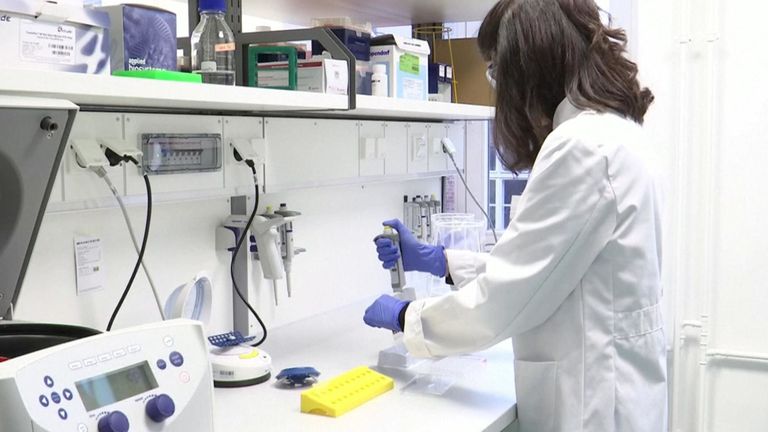
Image:Several people are being tested for the coronavirus in the UK
But, because scientists developed that vaccine (one for MERS is still in development), Prof Kellam believes human testing could begin as early as this summer.
"If everything moves smoothly, it takes three to six weeks to get to the point where you can start testing, then you look to see if they can raise an immune response, normally in an animal.
"You won't start to get human studies until about the beginning of the summer, probably July. But, it's a bit of a moveable feast."
The spread rate
By using genome modelling methods - based on the new coronavirus' amino acid sequence - Prof Kellam and his team can compare them to MERS and SARS proteins to figure out how quickly the new virus can spread.
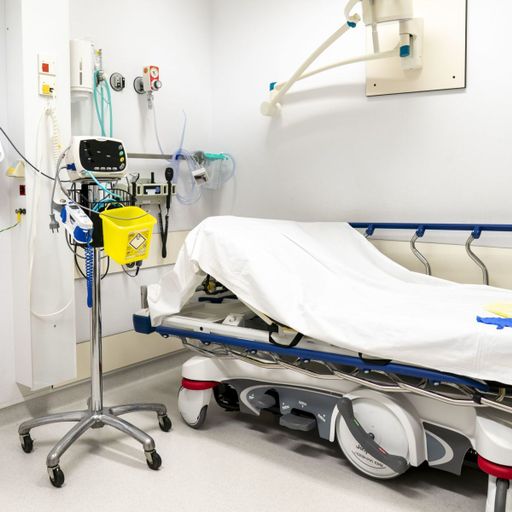
How does the UK respond to an outbreak?
He said: "When using these homology models we already know, we can screen them for new drug models and you can use the genetics that we know to start to give us computational screening models to create a vaccine.
"You start to understand its biological properties, how does it replicate, does it tell us it is roughly the same as MERS and SARS?
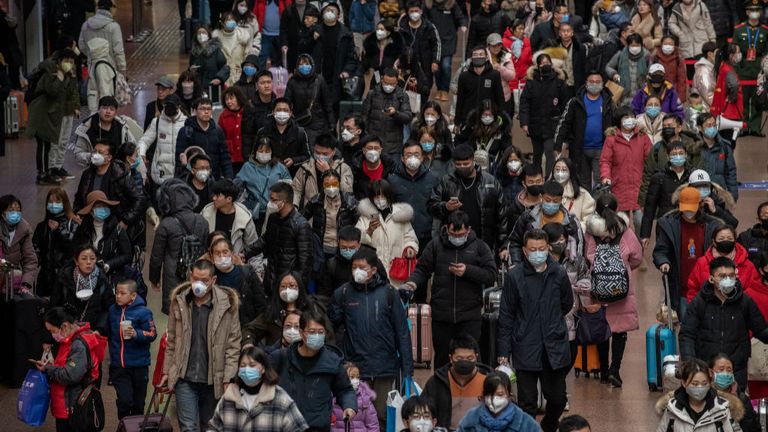
Image:People are being told to self-isolate if they have been in China or in touch with
"At this stage, what we can tell is coming from the genomes and the rate of accumulation in the genome.
"It seems typical so the estimation is you will accumulate one new mutation for every month of the virus."
The virologist said China is releasing data on the new coronavirus "in a really timely way" and has been very open and transparent in reporting cases, severe cases and deaths, which helps scientists to determine how quickly it will spread.
"From past experience with viruses like MERS, what you see initially and the patterns of spread and disease tend to hold true," he added.
"But you have to be aware of anything that changes - which could be for the better."
Human-to-human infection
Chinese authorities confirmed on 23 January that the
new coronavirus can be transmitted between humans
, with several cases since stemming from contact with people who have the virus.
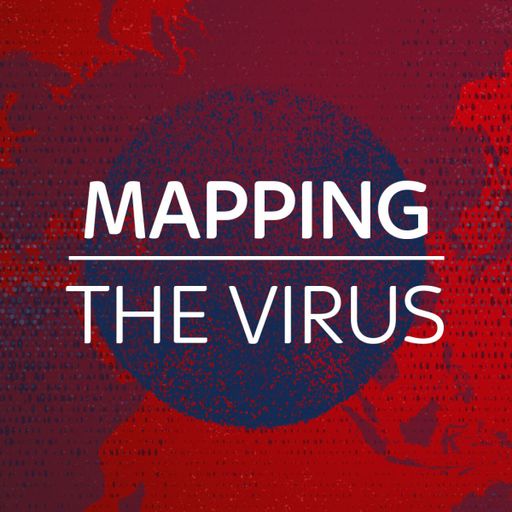
Mapping the virus: What you need to know about the coronavirus
While data is still coming through about how fast the coronavirus could spread between humans, Prof Kellam said by assessing those numbers scientists can get an indication of how many new infections can arise from one person.
"Over time you keep assessing those numbers, so the more infection control you have the less people one person will infect."
He said Imperial's medical research centre will then be able to create a model of the likely trajectory of the virus from one person.
Controlling the virus
Tens of millions of people in cities across China's Hubei province, where the virus originated from, have been placed on lockdown.
Masks and antibacterial gel have become a necessity across Asia and airports around the world as people try to protect themselves - measures Prof Kellam said are essential.
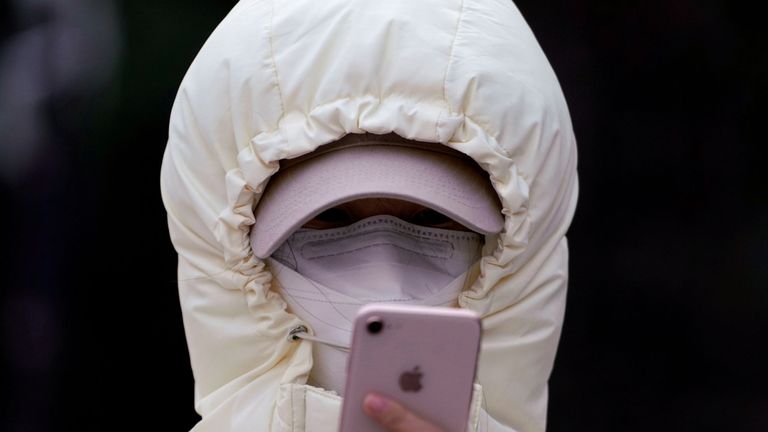
Image:Protecting yourself from getting the virus is essential
He said: "It's all about trying to decrease exposure. The masks decrease exposure to droplets from an infected individual and act as a physical barrier to touching your face, something we do hundreds of times a day without realising.
"Those infection control procedures are really important."
As the coronavirus has an established two-week incubation period, Prof Kellam said self-isolating, as the UK government is advising, is crucial to control the spread, especially in countries with only one or two cases.
He said tracing where people who potentially may have the virus have been and who they have had contact with is also crucial - even though it is incredibly time-consuming.
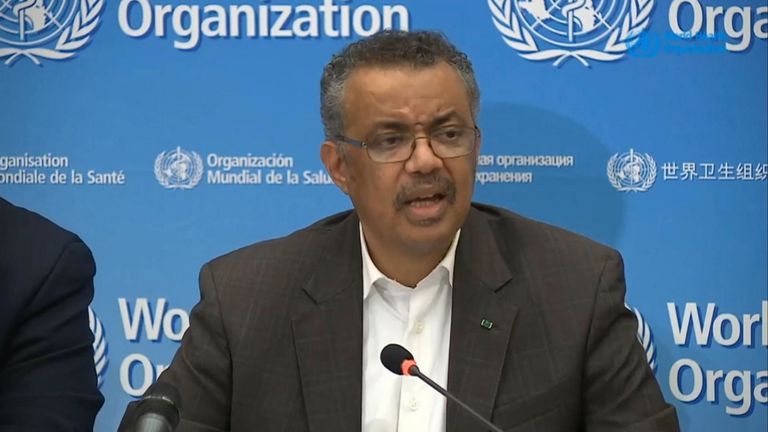
WHO chief: We don't know what damage virus could do
"It is a lot of hard work but it's what the health authorities are set up to do," he said.
"In the UK, that's what the NHS and Public Health England (PHE) are designed to do and will be doing that.
"It's a lot of work but it's the right thing to do and it's proven to work in the past."
He admitted that getting people who may have been in contact with virus carriers is based on a degree of compliance and trust and accepting the advice of health officials.
Prof Kellam added that people are generally "very receptive" and want to help prevent the spread.
How did the virus transmit from animals?
Prof Kellam said his team is working on Chinese scientists' theory that the virus was transmitted by bats after the World Health Organisation said it presumes it originated from an animal.
He said: "With the genetic history of this virus, a group in China has said it's related to a bat coronavirus.
"The chance of it coming from a bat directly to a human is not high.
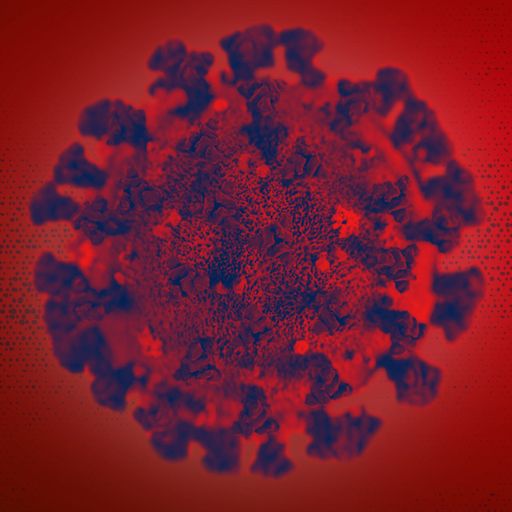
What is a global health emergency?
"However, what we can start to see from MERS, SARS and this coronavirus is the proximity of humans to wild animals either in wet markets or in animal husbandry, and that proximity where you don't always know what the infection is in the animals.
"There is a higher chance of zoonotics - transfer from animal to human."
He added that scientists have not yet established exactly how this virus transmits from animals, however it could be the same way that humans do, through droplets and respiratory infection.
 简体中文
简体中文

